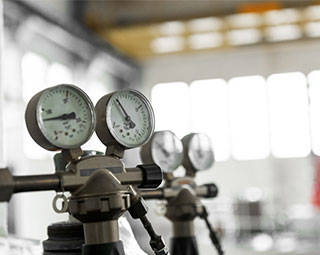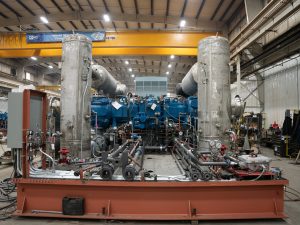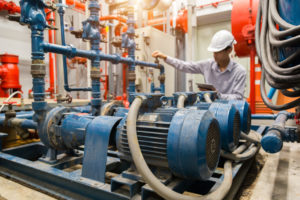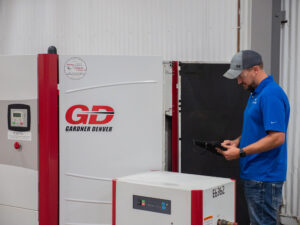If you use an air compressors regularly, you know how effective they are and how much they help you perform your work well. However, do you know how these devices work?
Even if you’re familiar with using an air compressor, you may not know how these machines operate. Learn what’s going on in an air compressor as it helps you complete your next project.
The Basics
Though you can find many types of air compressors, they all have the same function: to cram a lot of air into a tank, which means that the air is under high amounts of pressure. Then, when the operator of the compressor uses the device, the pressure in the tank causes air to shoot out at high speeds.
The air compressor will have an upper and a lower pressure limit. In other words, the machine will know when it’s time to stop forcing more air into the tank, so that the pressure doesn’t get too high, and when it’s time to start forcing more air into the tank again when the machine is being used, so that the pressure doesn’t get too low. The upper and lower limit depend on the type of compressor and its intended use.
The Specifics
Though air compressors all work on the same basic principles, different types of compressors use different methods to force air into their tanks. Learn more about the specific types of air compressors and how they work.
Positive Displacement
Air compressors that use positive displacement let air into the tank, then decrease the tank’s volume after the air is already inside. Because the air is forced to fit into a tighter and tighter place, the air compresses.
You can find multiple types of positive displacement air compressors, including:
- Rotary screw compressors. These compressors have two screws. As the screws turn, they guide air into the chamber and decrease the chamber’s volume.
- Piston-type air compressors. These compressors use pistons to pump air into the chamber, and one-way valves prevent the air from escaping as the pistons move.
- Vane compressors. The compressors have a rotor with slots in it to push air into the chamber.
All these compressors work on the same principles, but have different ways to force air into the tank to be compressed.
Dynamic Displacement
Positive displacement compressors guide air into the tank, then reduce the tank’s volume to compress the air. On the other hand, dynamic displacement works by speeding up the air that goes into the tank. Once the air is inside, it slows down. Since air that is moving is under lower pressure than air that is still, the air compresses as it slows down inside the tank.
You can find two main types of dynamic displacement air compressors:
- Axial compressors. These compressors use a set of turbine blades to force air into the tank.
- Centrifugal compressors. These compressors rely on an impeller, which draws air in at the center and makes it speed up as it pushes it around its perimeter.
While axial compressors aren’t very common, centrifugal compressors are.
Each type of air compressor works a little differently, but they all have the same result: they all compress air so that when you need a blast of high-pressure air, you can get one.
If you’re not sure which type of air compressor would work best for your needs, reach out to the experts at Kruman Equipment Company. We can assess the kind of work you do and recommend an air compressor that will do the job well for you. Contact us today to get started.




